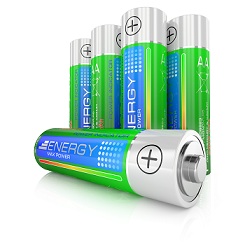Nanomaterials for better batteries and solar cells

Related topics
Innovation Advanced materials Advanced manufacturing & processing Belgium Czechia France Germany Italy Spain United Kingdom Switzerland Nanotechnologies, advanced materials, advanced manufacturing & processing, and biotechnologydate: 27/02/2014
Project: Ordered Inorganic-Organic Hybrids Using ...
acronym: ORION
See also: CORDIS
Contact: http://www.cidetec.es/ORION/index.h...
The EU-funded ORION project worked to create a new family of improved materials. Its innovative approach was to combine inorganic nanomaterials and ionic liquids. Both elements of the hybrid enhance the properties of the other and together function as one.
Nanomaterials, in this case metal oxides and their derivatives, have a greater surface area than other materials, increasing their capacity for chemical reactions. ORION’s four years of work, which ended in September 2013, involved tailoring the shapes and other properties of the porous electrodes’ nano-surface.
The research will ultimately lead to two separate generations of materials for batteries and solar cells, says ORION project leader Dr Ramón Tena-Zaera, head of the 'Materials for Energy' unit of Spanish research organisation CIDETEC (known also as IK4-CIDETEC).
More power
The first will end up in new, efficient lithium-ion batteries. These will be at least 50% more powerful than today’s standard batteries and will withstand being recharged twice as many times, giving them great green credentials, he says.
They will be safer, too, because they are temperature resistant and non-flammable. The project’s initial demonstrator was energy-autonomous devices for cars, such as self-darkening mirrors and lights that come on when doors are opened.
ORION’s hybrid materials will be also used to create innovative solar cells. In conventional solar cells, silicon performs all roles in electricity generation. The project’s dye-sensitised solar cells (DSC) are based on the combination of three specialised materials, including ionic liquids (salt in a liquid state) and/or ionic liquid-based hybrids.
It is the addition of ionic liquid that is behind the longer duration DSC – the project has demonstrated a lifetime extension of more than 30%. The technology will be initially applied to household use, giving a steady current.
Tena-Zaera divides ORION’s achievements into two. First, was the generation of high-impact, fundamental new scientific knowledge. “In that we were very successful,” he says. This laid the foundation for the industrial achievements after the project ended in September 2013.
The project has already lodged eight patent applications, with three more planned by the end of 2014. ORION partners Solvionic and Solaronix have also launched new products on the market. Another partner, UK-based Johnson-Matthey, has now entered the Li-ion battery market, and has already opened a new battery division.
The future looks promising. The market for electric-car batteries alone is huge. Furthermore, new EU rules require more efficient solar cells, meaning a large EU market. The export potential for ionic liquid-based materials is growing: in 2011, Solvionic exported 11% of its new chemicals and in 2012 that proportion increased to 40%. It should be noted that the commercialisation is not funded by the European Union.
“We know there are some market needs which can be exploited quite fast,” says Tena-Zaera.
With more work needed to apply the results to other technologies and applications, ORION’s former partners are currently working to establish a follow-up project. This will extend ORION’s work and take on new applications such as light-emitting diodes.
“It will be something based on the ORION results but at higher technology readiness level,” says Tena-Zaera.
